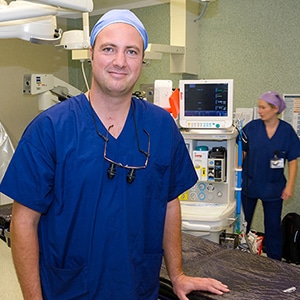
Today’s facelift surgery techniques are not the same as techniques that may have been performed a few decades ago. While a facelift was only considered a skin-associated surgery in the past, it has become much more complex and sophisticated, allowing the patients to get much better results. This has also led to the increased popularity of this procedure. There are many surgical and non-surgical approaches toward treating the aging face; however, facelift surgery remains highly popular due to its superior and longer lasting results.
Facelift surgery, also referred to as Rhytidectomy, is a surgical procedure concerned with rejuvenating facial soft tissues to provide the patient with a youthful look. The techniques used for a facelift procedure depend on several factors like the patient’s individual characteristics, wishes and medical fitness
To understand the details of the facelift surgery, it is important to understand facial anatomy and the structures that may be altered during the surgical procedure. The face is divided into superficial and deep segments. Superficial segment is the skin and associated fat; whereas the deeper segment is the layer with muscle and connective tissue and the deeper fat pockets. There is chnages to skin with ageing but usually more drastic changes happen tro the deeper layers with loss of connective tissue support and migration of tissues with gravity.
During your consultation, Dr Yaprak will discuss the procedure with you and create an individual plan for your surgery based on your particular needs.
This might involve determining your facial balance by examining your face’s horizontal fifths and vertical thirds. Other face factors that also play an important role include the overall length of the face, the midfacial width, and fullness. Taking all these factors into account, Dr Yaprak will create surgical plan, individually customized to your unique needs.
He may also evaluate the skin quality and elasticity. This may be helped by the provision of pictures from your youth so Dr Yaprak can understand how your skin thickness and volume have changed over the years. Before photographs will also be taken to compare the changes from your procedure.
Facelift surgery aims to allow skin elevation while also simultaneously causing tightening of the muscles and tissues underneath. It may also involve removing volume from certain parts of the face and redistributing them to other parts that need it. This is usually done using fat grafting. Once this is done, the facial skin is redraped over the facial contours while removing the excess skin. Finally, the surgical site is cleaned and closed using carefully placed stitches. The overall procedure time usually varies between three hours to five hours.
The choice of incision made during the procedure depends on the techniques used for the surgical procedure. These include:
Facelift surgery aims to allow skin elevation while also simultaneously causing tightening of the muscles and tissues underneath. It may also involve removing volume from certain parts of the face and redistributing them to other parts that need it. This is usually done using fat grafting. Once this is done, the facial skin is redraped over the facial contours while removing the excess skin. Finally, the surgical site is cleaned and closed using carefully placed stitches. The overall procedure time usually varies between three hours to five hours.
The choice of incision made during the procedure depends on the techniques used for the surgical procedure. These include:
Patients typically stay overnight in the hospital, the face is covered with a dressing to put gentle pressure on the face and there can be some drains. Head elevation is very useful in the first week especially.
Dressing is usually removed the next day and a face garment putting gentle pressure on the face is worn, this is usually worn throughout the day for 2 weeks. Drains are usually removed in around 2-3 days.
We expect bruising and swelling and most of this settles in 2-3 weeks but some of it can remain for around 6 weeks.
There will be an appointment in clinic for removal of drains and one week after surgery for removal of sutures. We will bring you back for a cosmetic follow up in 3,6 and 12 months to evaluate the progression of the surgery.
The individual who are not recommended to get their facelift surgery include those who have: